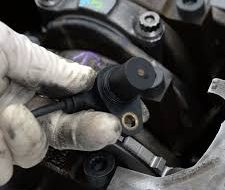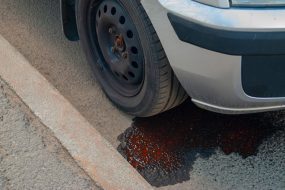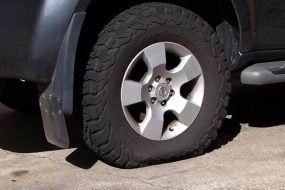
Most times when there’s difficulty in starting a car, it’s as a result of the car battery being discharged or weak. If it turns out that the starter is the problem there’s no need to panic, if it’s a manual transmission car, it can be pushed or towed to start it while an automatic car can’t. But can you jumpstart a car with a bad starter?
It is not possible to jumpstart a car with a bad starter because jumpstarting only provides a boost for the already weak car battery. Moreover, even if you manage to jumpstart a car with a bad starter, it won’t solve the underlying problem.
Can You Jumpstart a Car with a Bad Starter?
No, you cannot jumpstart a car with a bad starter. Jump starting a car means connecting the drained battery of a car to another battery that is fully charged. In this case, the car’s battery is not the problem but the starter and so, jump-starting will not change anything. It’s only a waste of time in the case of a bad starter.
How to Start a Car with Bad Starter
- By Tapping the Starter: You can tap the starter to make it work. This is only possible if you know where the starter is located and with the right tools to do the tapping.
- By Pushing the Car: If you drive an manual transmission car, you can push the car to enable it start.
What Causes Car Starters to Go Bad?
The reasons why car starters go bad are because:
1. Faulty Supply of Power
A car starter requires a high amount of electrical current before it can successfully ouch and provide power to the necessary parts so that the engines can start rotating.
When there’s a faulty supply of power the car starter doesn’t have enough force to push and cannot provide power for the other parts to keep the engine in motion.
2. Worn Out Coil Windings, Brushes, and Gears
When the brushes in the car starter start wearing out, they do not make contact as much as they’re supposed to.
This means that the resistance between the brushes and the commutators in the car’s starter would go up making it harder for the starter to engage the engine and crank it.
Resulting in a higher requirement from the battery and the starter works harder to provide enough electrical flow to the engine.
Over time, the increase in battery requirement will cause the starter to drag, causing the cranking of the engine to become slower. Eventually, the starter won’t be able to crank the engine again.
3. Stiff or Faulty Solenoid Switch
The solenoid acts as a switch, it turns on the starter motor when the driver turns the ignition switch. The ignition passes a signal to the solenoid and when it gets the signal, it would convey power from the car battery and close the switch.
This power is used to turn the starter motor and also the engines so that the engines can start combustion and keep turning all on their own.
4. Worn Out Starter Gears
The starter gears connect the starter to the engine’s flywheel, when they’re worn out, they begin to make grinding noises, and sometimes the problem can be found within the starter motor.
This kind of fault cannot be fixed, so once it is noticed you should replace it as soon as possible because if it isn’t replaced it’ll cause damage to the engine’s flywheel.
5. Damaged Starter Pinion
The starter pinion in its design was made to fit into the ring gear. When the ignition switch is turned on, the electromagnets inside the body of the car starter push out the rod that the pinion is attached to so that the pinion meets the engine’s flywheel and allows the starter motor to begin rotation.
When Should You Not Jumpstart a Car?
You should not jump-start your car when the battery is not the problem. Imagine overloading an already charged battery with a boost from another battery of the same size or even bigger, this could damage the battery.
Before you even attempt to jumpstart a car, you should have conducted a thorough check-up and made sure that the problem is the battery.
Also Jumpstarting a vehicle should be avoided unless it’s the only option left because it could damage the electronic system of the car.
Jump starting provides the dead battery with a power surge that’s high enough to give the car a head start so that the alternator charges the battery. This said power surge can harm the onboard computers, safety systems, and some parts of the engine.
Cons of a Bad Starter
The disadvantages of a bad starter are:
- Increased Ignition Time: When the car starter is bad, it takes longer than usual to start the car. If the car starter is damaged completely, the car won’t even start.
- Electrical Issues: The car starter is a part of the car’s electrical system.
When you keep trying to start the car and it’s not yielding any positive result, if you keep trying the starter can overheat and when it overheats, it can cause some other electrical issues
How Do You Tell if it’s Your Battery or Starter?
Whenever you experience difficulty in starting your car, this could be as a result of different things but the type of noise you can hear from the car when you try to start it would give you a hint as to what is wrong with the car.
If the car makes a repeated click sound when oh turn the ignition switch or press the button. This repeated click is a result of a flat battery or something wrong with the battery terminals. In this case, a simple jumpstart would do the trick and you’ll have your car back in time.
However, if you hear a single click sound whenever you try to start your car’s engine this most likely points to a problem with your car starter’s solenoid
The last thing you should look out for is when you try to start the engine and there’s no sound, this most definitely means that the starter circuit is not even moving or trying to crank the engine.
When this happens you shouldn’t even bother to jumpstart the car cause there’s no need to. The car starter is bad and should be fixed.
Conclusion
Jump starting your car’s battery should only be done after you’re sure that the fault is from the battery. There’s no reason to keep trying to jumpstart a battery that’s not drained.









